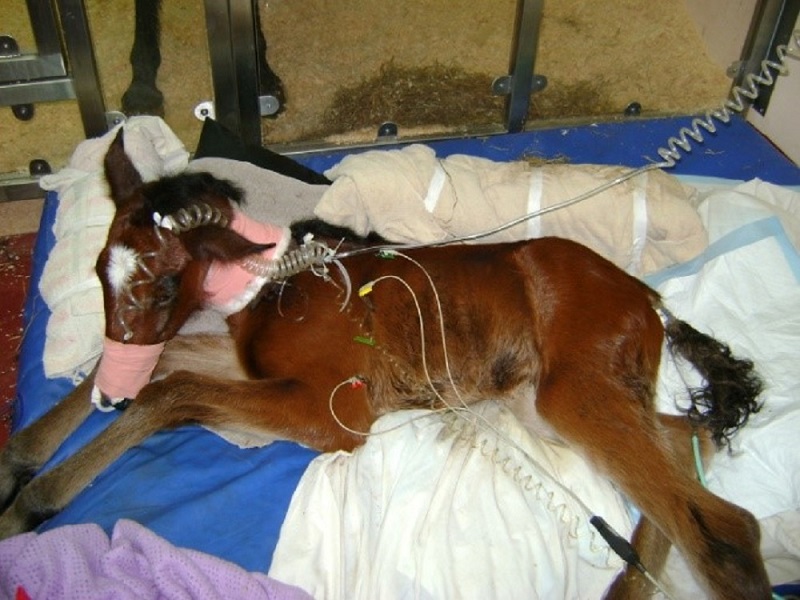Responsible Antimicrobial Use in Horses
Clinical Connections – Spring 2022
Bettina Dunkel, Head of RVC Equine
Many diseases in horses are associated with bacterial infection. Unfortunately, viral or fungal infection, bacterial toxins, tissue damage or neoplasia also cause systemic inflammation and clinical signs are indistinguishable from bacterial infection.
Although not effective against viral, inflammatory or neoplastic conditions, antimicrobials are often used in these cases as it can be difficult to conclusively rule out a bacterial infection. Due to increasing microbial resistance, pressure on veterinarians is mounting to adhere to responsible use of antimicrobial drugs.
Clinical examination findings are often non-specific and while the presence of a fever increases suspicion of an infection, it is not conclusive as inflammation, hyperthermia, neoplasia or tissue trauma can also lead to an increased temperature. Equally, the absence of a fever does not rule out even severe infection.

Haematology and acute phase protein concentrations, such as fibrinogen or serum amyloid A (SAA), can be difficult to interpret as increases are triggered by infectious and non-infectious inflammatory conditions [1, 2]. In adult horses, leucopaenia is commonly observed with inflammation, often originating from the gastrointestinal system. It does not necessarily indicate the presence of infection or the need for antimicrobials.
Leucocytosis in mature horses can be observed with inflammatory, infectious and neoplastic conditions – or following administration of corticosteroids – and is therefore also of limited use. As immediate treatment is usually required, clinicians need to make an educated guess whether bacterial infection is likely.
Many equine viral and some bacterial diseases can be diagnosed by polymerase chain reaction (PCR) with results often being available the following day. Cytological samples can be of great value when trying to rule out an infectious aetiology, as results are available much quicker than culture results. In cases where clinicians have already initiated antimicrobial treatment, but PCR or cytology do not support a bacterial infection or identify a viral cause, antimicrobial treatment should be discontinued immediately.
The old concept that “a course of antibiotics needs to be finished to avoid development of resistance” is obsolete and not supported by evidence. To the contrary, reducing the length of treatment has a significant effect on decreasing previously existing resistance[3] while increasing the length of antimicrobial use increases the risk of resistance development[4]. In most cases a short duration of antimicrobial therapy, ranging from a single dose (for example pre-operatively) to 24-72h, is sufficient, with long-term treatment being rarely required.
Recent studies in people have shown impressive reductions in antimicrobial resistance with a reduction of not only overall use but also with a decrease in days of antimicrobial therapy, highlighting the importance of shortening treatment[3]. Limiting the duration of antimicrobial treatment in proven infections can be challenging. Fear of negating a treatment success often leads to prolong use of antimicrobials in clinically apparently recovered patients. In the past, return to normal haematologic parameters or normal concentrations of acute phase proteins have been used as markers to safely discontinue antimicrobial treatment. Return to normothermia, improved appetite and return of normal demeanour might be better indicators that further treatment is not necessary.
It is also common practice to initially treat systemically ill horses with injectable antimicrobial drugs for 48-72h followed by continued oral treatment. In most cases, this is not necessary. An alternative approach is stopping antimicrobial treatment after 48-72h and monitoring the patient for another 24h closely. Should signs of infection re-occur, such as recurrence of a fever, a decrease in appetite or change in demeanour, treatment can easily be re-initiated – but this is rarely necessary.
References
1. Westerman, T.L., et al., 'Evaluation of serum amyloid A and haptoglobin concentrations as prognostic indicators for horses with inflammatory disease examined at a tertiary care hospital', Am J Vet Res, 2015. 76(10): p. 882-8.
2. Long, A. and R. Nolen-Walston, 'Equine Inflammatory Markers in the Twenty-First Century: A Focus on Serum Amyloid', A. Vet Clin North Am Equine Pract, 2020. 36(1): p. 147-160.
3. Dona, D., et al., 'Implementation and impact of pediatric antimicrobial stewardship programs: a systematic scoping review', Antimicrob Resist Infect Control, 2020. 9: p. 3.
4. Llewelyn, M.J., et al., 'The antibiotic course has had its day', BMJ, 2017. 358: p. 3418.
